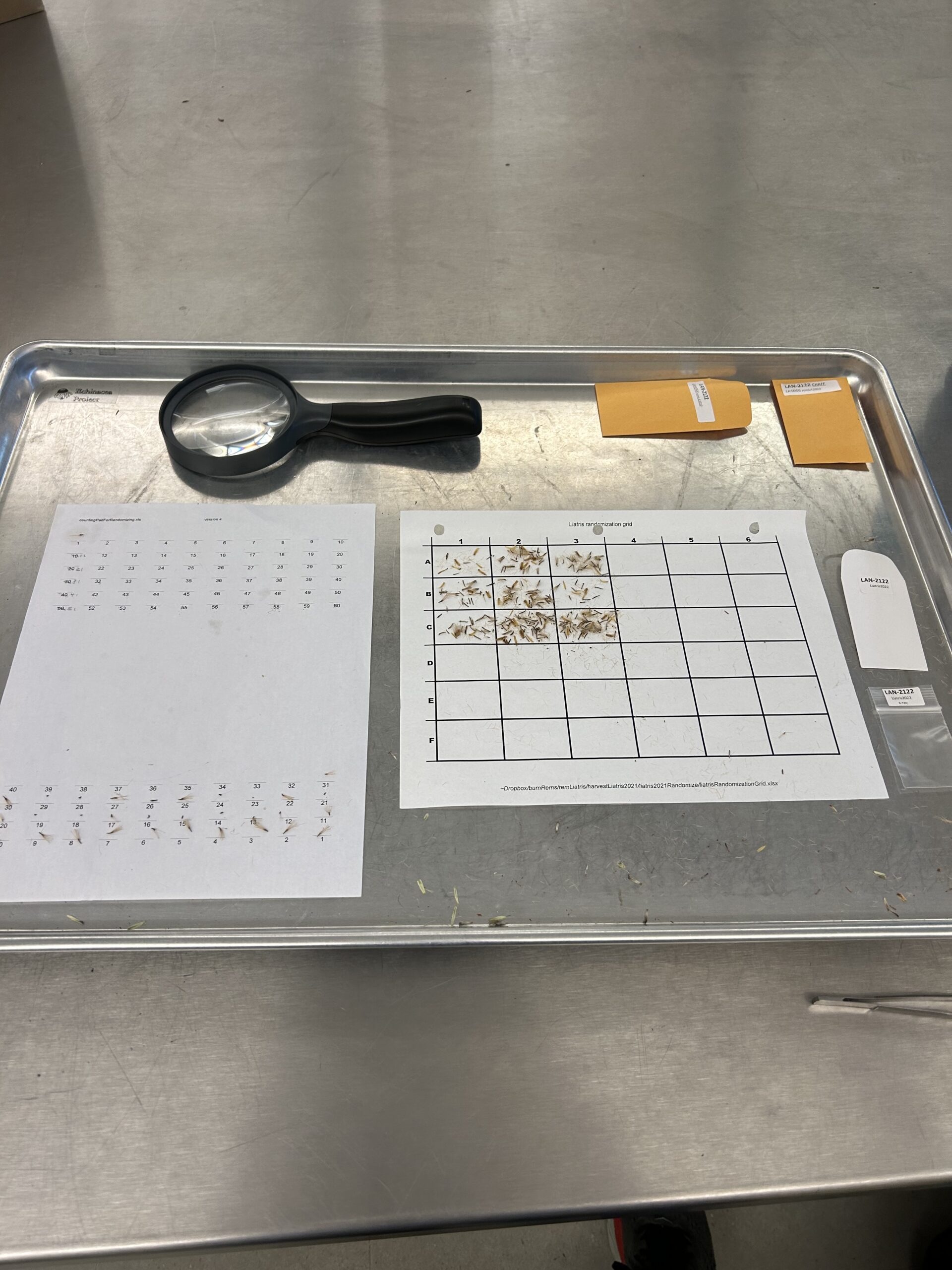
In lab today, I started the process of randomization. This step in the project does take some time and patience, but all of it is worthwhile toward reducing bias and collecting achenes that can be x-rayed or identified as eaten. Similar to the randomization of achenes from Echinacea plants, sheets of randomization and counting grids are used. In addition, we also use plastic bags, white envelopes, stickers, tweezers, and a magnifying glass for this procedure. The first step involves pouring the achenes evenly across the randomization grid and ensuring all the achenes are placed in a specific square on the grid without being on the lines. Then using a randomized list of grid coordinates, we go down the list until we hit a coordinate (an example would be “B2”) with achenes present. We then examined each achene in the selected coordinate to see if there was any predation. If less than 30 achenes were counted in the coordinate, we randomly selected another one going down the randomization list. Once we categorized 30 achenes as either eaten or eligible for x-ray, we took our white envelope and plastic bag and put stickers on them. The envelope will store the eaten achenes while the plastic bag will contain the achenes ready to be x-rayed. On the envelope, we write the date, initials, and the quantities of achenes eaten, not eaten, and uninformative. After putting the achenes in their respective containers, we put them in a pile marked “randomized,” and we move on to the next one. As of today, we managed to get through a little over one third of our first batch, so we still have much work to do before proceeding onward.

Leave a Reply